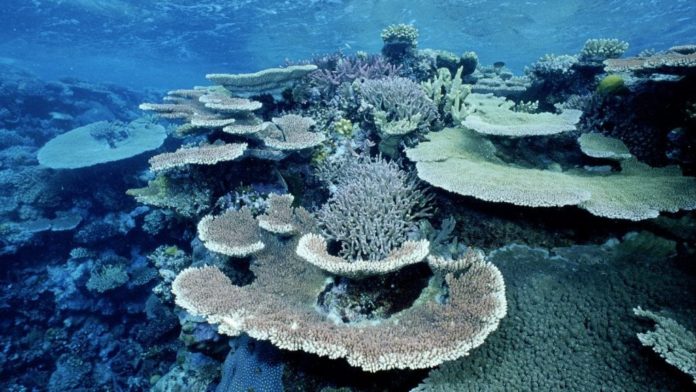Australia’s Great Barrier Reef is one of the biggest and the most beautiful natural wonders of the world. Stretching almost along the whole eastern coast of Australia, it is a big swath of Corals living in a symbiotic relationship to the multitudes of organisms that call the reef their home. The disturbing update is that the reef is undergoing the third mass bleaching event in the last five years.
This event is the most widespread bleaching event yet. For the first time in recorded history, even the southern part of the reef has been extensively affected by this bleaching event. The source of the problem is quite clear. The widespread emission of green-house gasses has been warming up the plane for quite some time now.

Several institutes that are responsible for monitoring the Great Barrier Reef, such as ARC Center of Excellence for Coral Reef Studies, have been conducting extensive surveys of the reef. The surveys have revealed that the entire length of the iconic reef, which stretches for about 2,300 kilometres, has been severely bleached.
The monitoring authorities have been shocked by the frequency of the bleaching events that have been recorded. Three events in five years are not something that the researchers expected to happen until the middle of the century. The scope of destruction that global warming can cost might just be limitless. The warming oceans have been the single biggest cause of the destruction of the reef.

Bleaching is a response that the corals only exhibit when exposed to warm waters. When the water temperatures become higher than the natural temperature of the surrounding water, the corals start expelling the algae that are responsible for providing energy in the form of food to the reef. These algae are also responsible for the colour of these reefs. Expelling these algae reveals the true white colour of the reef, thus giving the event its name “bleaching.”
Bleaching Is not immediately fatal for the corals. After expelling the algae, the corals can survive for some time. If the temperatures of the surrounding waters go down to the normal range, the algae can go back, and the corals can regain their colour and functionality. If the temperatures remain high, the corals can die. This would mean the destruction of habitat for multitudes of marine species that call the reef it’s home.
The greatest concern for the scientists this year has been the expansiveness of the event. The southern third of the reef, which had escaped all the previous bleaching events, has been severely affected this time. This means that the southern parts of the world, which were expected to remain colder just a little longer, might be under the influence of global warming already. Another point of concern is the shrinking gap between two consecutive bleaching events.

The recovery rate of the coral reefs is also going down as the temperatures have begun to soar all year round. The great barrier reef is just the first of the victims of global warming, and if we lose it, it might be the biggest gut-punch nature has received in recent times.
Further Reading:


